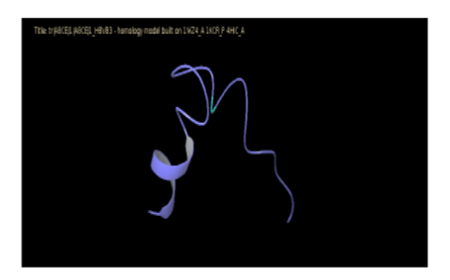


Indian Journal of Science and Technology
Year: 2022, Volume: 15, Issue: 10, Pages: 451-456
Original Article
Ruchi Yadav1*
1Amity Institute of Biotechnology, Amity University, Uttar Pradesh Lucknow Campus, 226028
*Corresponding Author
Email: [email protected]
Received Date:22 March 2021, Accepted Date:28 January 2022, Published Date:11 March 2022
Objectives: To predict the structure of L-HBsAg envelope protein of Hepatitis B Virus and its evolutionary relationship. Methods: Bioinformatics Computational methods were used for the structure prediction and evolutionary conservation analysis of large envelope protein of Hepatitis B virus (L-HBsAg). Structure prediction L-HBsAg envelope protein was done using Multi-template homology modeling method using Schrodinger software. Phylogenetic tree was constructed by MEGA tool to identify protein similarity of L-HBsAg protein with other genotypes of HBV. Findings: Modelled structure of L-HBsAg protein shows that this protein has single alpha-helix and loop structure. Multiple sequence alignment result shows that L-HBsAg belongs to family of vMSA (pfam00695, major surface antigen from hepadnavirus) conserved domain. Phylogenetic tree reveals that L-HBsAg shows similarity with other proteins of HBV protein like preS protein and envelope protein. Novelty: Structural analysis identifies the binding properties of L-HBsAg protein. This study concluded that large envelope protein of HBV can be potent drug target for designing a novel drug.
Keywords: LHBsAg; HBV; evolutionary analysis; structure prediction; dane particles
© 2022 Yadav. This is an open-access article distributed under the terms of the Creative Commons Attribution License, which permits unrestricted use, distribution, and reproduction in any medium, provided the original author and source are credited.
Published By Indian Society for Education and Environment (iSee)
Subscribe now for latest articles and news.